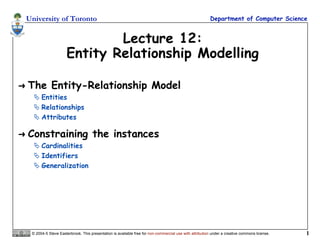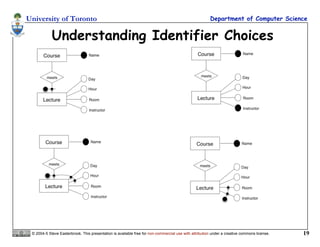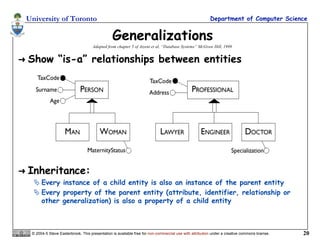This document presents a lecture on entity relationship modeling. It introduces key concepts of the entity-relationship model including entities, relationships, attributes, and ways to constrain instances using cardinalities, identifiers, and generalization. Examples are provided to illustrate exam, course, room, and meets entities and relationships. The document also discusses attributes, composite attributes, recursive relationships, ternary relationships, and the entity-relationship meta-model.






















